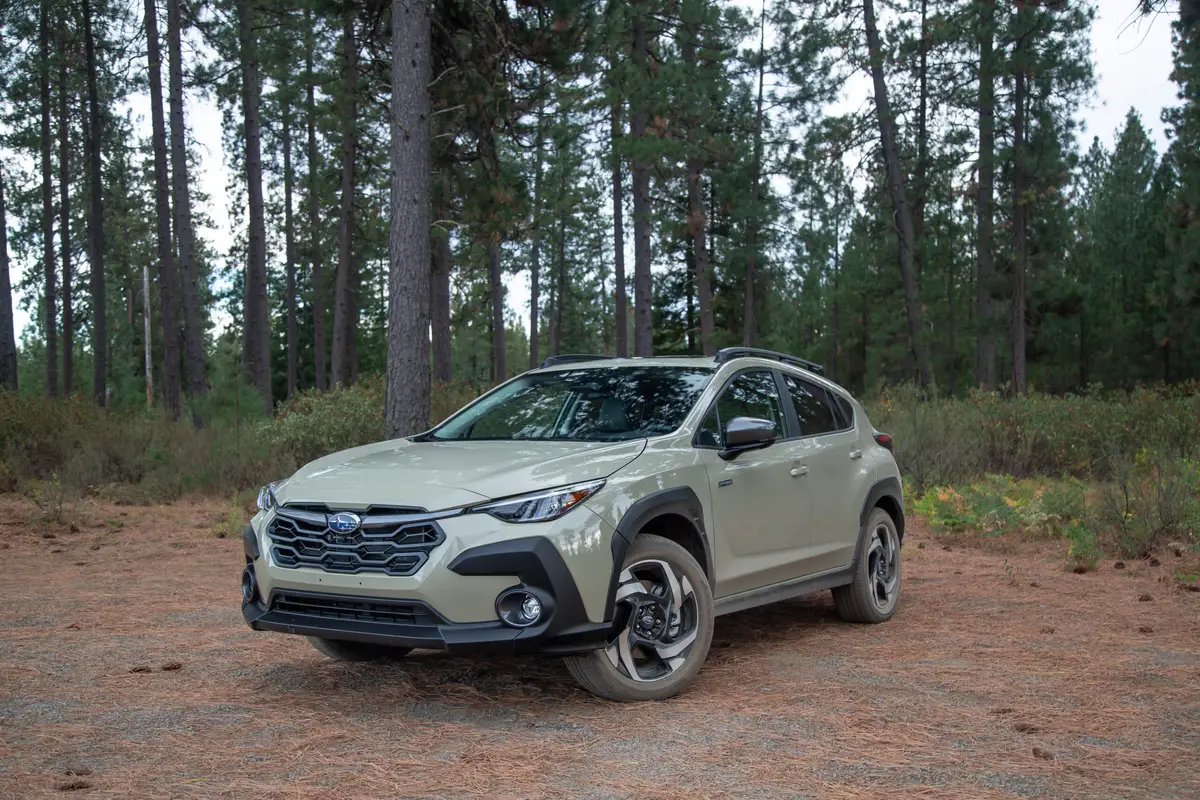How to Negotiate on Your First Car Purchase

You have figured out which car you want, found a few examples and are ready to reach out to dealers. How do you negotiate for your first car? It can be a tricky process, regardless of whether the car is new or used. To further complicate matters, the ongoing inventory shortage means new and used cars are in short supply and average prices are up. Although traditional haggling techniques are less likely to work in the current environment, some age-old car-buying advice still holds true. First-time shoppers should be prepared to navigate the situation, armed with knowledge, flexibility and patience. Follow our tips below.
Related: More First-Time Buyers Advice
Do Your Research
Research before you go, but be flexible: A car is a major purchase, and it warrants a lot of research before you hit the showroom or begin the online negotiation process. It’s helpful to know exactly what car you want and to check local listings to determine a fair price for it. Then, research all available incentives. While cash incentives are harder to find due to the inventory shortage, there are still some to be found, and many automakers offer low financing rates for qualified shoppers.
Be Flexible
Because the inventory shortage is expected to linger into 2023, flexibility will be key. You won’t have much leverage if you have your heart set on that Oxford green wagon with the moonroof and there’s only one near you. On the other hand, if you’re flexible on features or colors, you’re more likely to find what you’re looking for. Staying flexible can also mean putting off a vehicle purchase until vehicle prices start to come down. Used vehicle prices remain elevated but are expected to drop later this year or in early 2023.
Start With the Out-the-Door Price
When you contact dealers, ask for the best price out-the-door, meaning the total of price, taxes and any fees. That should be your starting point for negotiations, not a price before fees or (worse yet) a monthly payment. You might be surprised to find that a dealer’s initial offer is the best one, but you won’t know it unless you shop around.
Reach Out to Several Dealerships
Don’t limit yourself to only one dealership. It’s better to find several candidates at nearby sellers, create a spreadsheet with the details and status of negotiations on each car, and ask for emailed confirmation of any deals you make over the phone.
If you’re shopping for a used car, gathering competitive examples can help you gauge the appropriate price. If you’re transparent with each seller that you’re considering other similar cars, it could give you leverage.
Use the Cars.com app to show salespeople your list of 10 or so cars and where theirs falls as far as price and miles. If there’s a higher trim level with the same miles for less down the street, that’s a good way to get them to agree to a lower price.
Leverage Your Trade-In
As used-car prices soar during the inventory shortage, some first-time buyers may be surprised by the trade-in value of their older hand-me-down vehicle. That trade-in could end up being your best negotiating tool: J.D. Power estimates that the average trade-in value was nearly $10,000 in May — that’s up 59% from a year ago.
A recent Cars.com survey shows a similar trend. Approximately two-thirds of respondents who traded in their vehicles received a higher offer than expected; about half received more than $1,000 above their expected trade-in amount, and 20% reported they received $3,000 or more.
To get the most out of your trade-in, get the vehicle appraised at a used car dealer like Carmax or online before going into the dealership; if you get a lower trade-in offer from the dealer, ask if your best offer from the appraisals can be matched.
For Used Cars, Understand Their Condition
Most sellers will allow you to take the car to your mechanic for an inspection. Get a trusted mechanic to inspect the used vehicle you’re looking to buy, especially if it’s out of warranty.
Check every switch, all exterior lights, USB ports and folding seats. Look for scratches, wheel blemishes and other wear and tear, and use those conditions to negotiate the price.
Your mechanic will likely be able to find what the average buyer would miss. A good inspection will test things like engine compression, which can indicate age and significant wear. It may cost you $150 or so, but the possible problems revealed can save big headaches down the road.
Be Willing to Walk Away From Negotiations
If you don’t think the seller will work with you — and the price isn’t right —you should always be willing to walk away.
Walk away if the negotiations are not going the way you want or if you’re turned off by the salesperson. Bear in mind that they want to sell you a car, now. Understand that today-only deals are often a sales tactic unless there are manufacturer incentives ending that day. Do your research to know if that’s the case.
Need a Loan? Get Preapproved
Unless you plan to pay cash, it’s a good idea to know how much you can borrow, and even have your loan prepped before you see the dealer. Dealerships advertise extra-low interest rates, but it’s likely that only shoppers with top credit scores will get them, so it doesn’t hurt to have a backup in place.
Younger buyers may not get the best interest rate because they lack a credit history, but a qualified co-signer, like a parent, can help you get a lower rate. Because a dealership wants your financing business, they’ll likely try to match or beat whatever preapproval you have. First-time shoppers with good credit may be able to negotiate on the interest rate. This tactic can save thousands of dollars over the course of the auto loan, according to the Consumer Financial Protection Bureau. For example, $35,000 financed over 72 months at 5% will cost $5,584 in total interest. Meanwhile, at 4%, the same vehicle carries $4,426 in interest costs — a savings of $1,158.
When It Comes to Extras, Know Your Options
After you agree on a price, a dealership may try to sell you accessories, extended warranties, service contracts and even car insurance. Be sure you know what you really need and how much these add-ons might cost you; carefully consider any before you sign.
You can negotiate the price of those warranties, too, but you should be mindful of practices like extending your auto loan by months or years to pay for them. If your monthly payments don’t change, that extended warranty may seem like a great deal at the time. But those extra months will prolong your car payments and often add interest to the total loan.
Be Friendly
This isn’t combat. At the end of the day, treat every salesperson the way you want to be treated. The internet has given consumers more tools to negotiate than ever before. Many salespeople we’ve worked with understand that, and they’re usually reasonable about the negotiation process.
It’s best not to be too adversarial. You don’t want an unpleasant salesperson, and he or she doesn’t want an unpleasant customer — it works both ways.
In the market for a “cheap” car? Find used cars priced at $8,000 or less near you, or consider the top 10 most affordable new cars you can buy right now.
More From Cars.com:
- How Long Will the Vehicle Inventory Shortage Last?
- Amid Inventory Shortage, Used Prices Approach New
- Car Shoppers Face Shorter Supply, Rising Prices
- Now Is a Good Time to Sell Your Extra Used Car; Here’s Why
- How to Get the Best Offer for Your Trade-In
Cars.com’s Editorial department is your source for automotive news and reviews. In line with Cars.com’s long-standing ethics policy, editors and reviewers don’t accept gifts or free trips from automakers. The Editorial department is independent of Cars.com’s advertising, sales and sponsored content departments.
Featured stories





